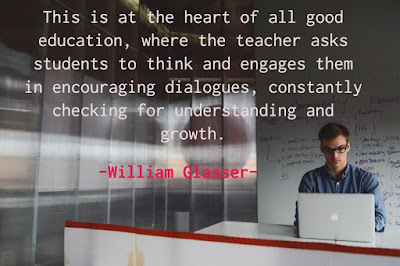+++++++++++++++++++++++++++++++++++++++++++++++++++++++++++++++++++++++++
Three interactive lesson platforms that I use frequently are EdPuzzle and PlayPosit (fka Educanon) and TED-Ed Lessons Personally, I really like EdPuzzle and TED-Ed Lessons, but I have colleagues who love PlayPosit. So, how do they all stack up? Are all interactive lesson platforms equal? I spent the last month testing out these three platforms and have come to a few conclusions
 |
| Can do audio voiceovers. |
Look at how this lesson uses the link tool to help students out with tough questions. The lesson creator also uses the link tool to make students dig deeper: The Spanish Empire, Silver & Runaway Inflation
| Editing Options Galore. |
A neat lesson using the Playposit platform is: Hernan Cortes: Hero or Villain
| Enables students to "Dig Deeper" |
The most simple platform out the four. Don't let this fool you. Its simplicity is deliberate. It doesn't have the bells and whistles of the other three (it really needs an audio feature) but it's neutral design and structure enables educators to do with it what they will. Furthermore, it is completely free. Just like the other platforms, teachers can add in questions and get class analytics. Each lesson has five components: Watch, Think, Dig Deeper, Discuss, ...And Finally. The more you use this platform, the more you realize you can play with those five sections and shape them specifically to your needs. Furthermore, it's simplicity enables you to integrated lessons from the other two lesson platforms into the Dig Deeper Section. Speaking of the Dig Deeper section, it is in this section along with the "...And Finally" section that TED-Ed enables teachers to truly elevate and expand not only the depth but the breadth of learning in their classrooms by bringing in critical thinking and extension activities. A perfect example of a lesson that pushes students to think critically and deeply is Josefino Rivera Jr.'s The Danger of a Single Story.
The Verdict:
All three platforms are excellent provided they are used mindfully. Your initial use is often simply a "I need a lesson to teach now" moment, but as time goes on and you commit to really playing around with the medium that is an interactive video lesson, you will begin to discover all of the ways you can use technology to extend and expand learning. Apart from the well-documented benefits that video lessons can do in the flipped learning environment, a few benefits that I've noticed are:
++++++++++++++++++++++++++++++++++++++++++++++++++++++++++++++++++
So, in closing, one final note: none of these tools offer one-stop shopping. If ever a design team comes up with a platform that combines TED-Ed's ability to elicit deep learning, combined with Playposit's suite of editing tools, combined Edpuzzle's sheer ease of use, they will corner the market. Until then, I'll leave it up to you to decide which one works best for you.
Enjoy and together, let's help our students take advantage of their LearnAbilities.
All three platforms are excellent provided they are used mindfully. Your initial use is often simply a "I need a lesson to teach now" moment, but as time goes on and you commit to really playing around with the medium that is an interactive video lesson, you will begin to discover all of the ways you can use technology to extend and expand learning. Apart from the well-documented benefits that video lessons can do in the flipped learning environment, a few benefits that I've noticed are:
- Heightened student engagement. Not one of my students does not like to learn this way.
- The ability to pick and choose which lesson platform best suits both the needs of my students and the purpose of a learning experience.
- The ability, when used mindfully and critically, to enable students to move beyond the basics of a lesson into deep, critical thought.
- The ability for every student in my class to learn at their own rate. As a special education teacher, this is, for me, the greatest gift. I can also customize each of these platforms in ways that enable me to provide accommodations, remediation and enrichment all in the same lesson.
- Students appreciate having video broken into manageable pieces. A few of my students prefer to see the video in it's entirety first, but everyone always goes back to the questions.
- The ability for students to highlight their own learning or personal interest by building and researching their own lessons. Students can create their own lessons using the TED-Ed Lesson platform once they register as a user. It's an amazing and rich learning experience to learn how to present and teach your own lesson.
- Almost instantaneous feedback.
- A superb way to help a student catch up after an absence. I no longer need to re-teach and re-teach key lessons. By building a solid library of video lessons and then posting them to my LMS of choice, I provide a tool that enables every child to learn no matter where they are.
++++++++++++++++++++++++++++++++++++++++++++++++++++++++++++++++++
So, in closing, one final note: none of these tools offer one-stop shopping. If ever a design team comes up with a platform that combines TED-Ed's ability to elicit deep learning, combined with Playposit's suite of editing tools, combined Edpuzzle's sheer ease of use, they will corner the market. Until then, I'll leave it up to you to decide which one works best for you.
Enjoy and together, let's help our students take advantage of their LearnAbilities.

No comments:
Post a Comment